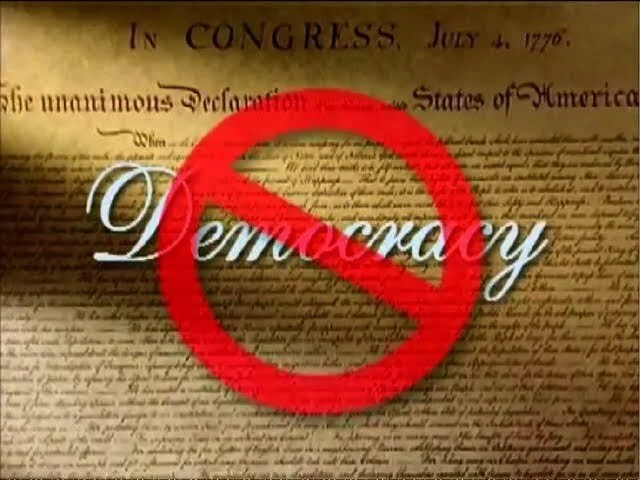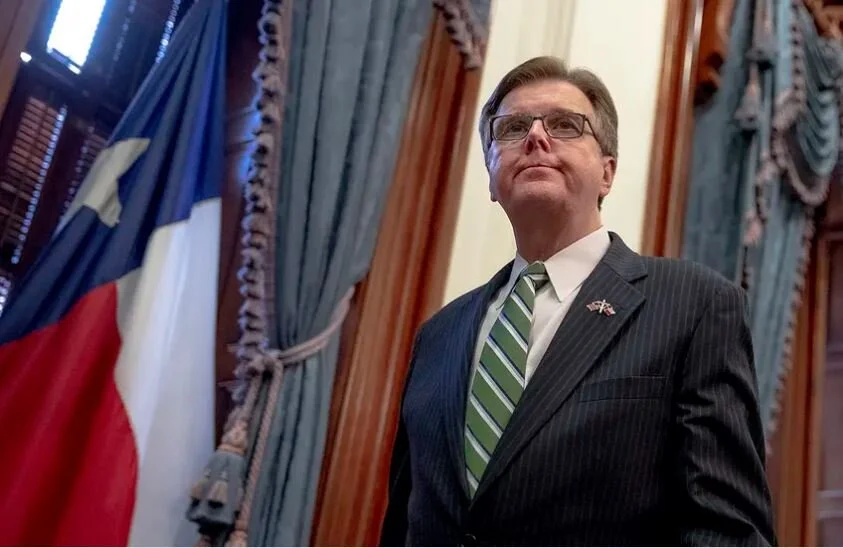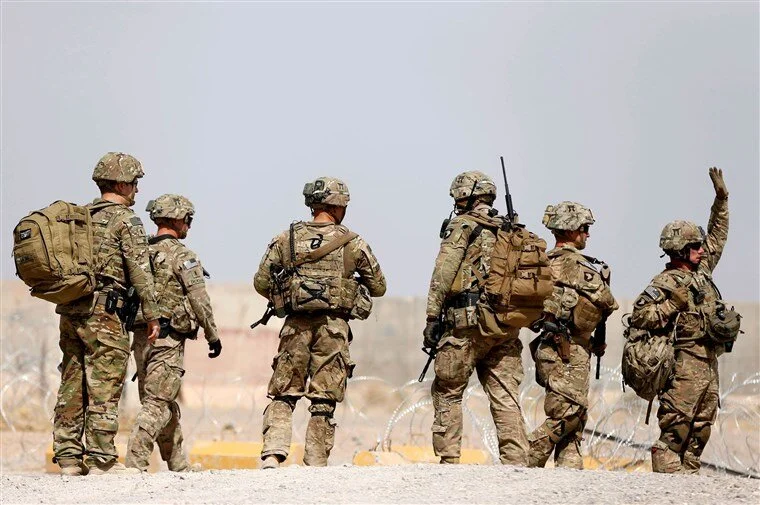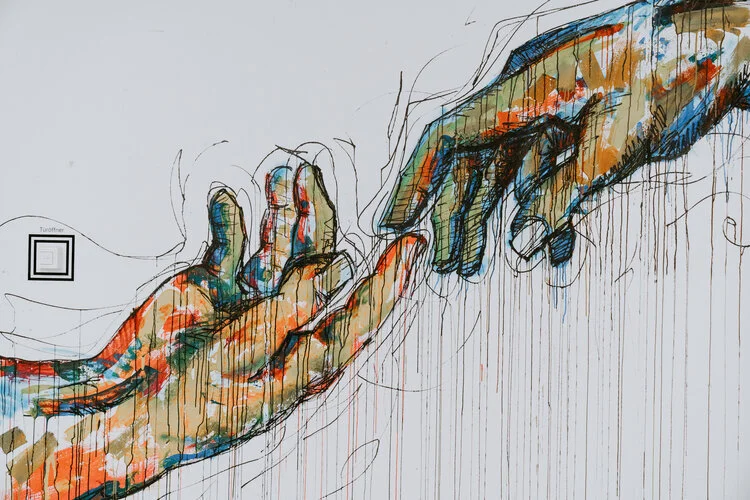This article is a companion piece to the Let Me Get This Straight blog of the same name. It goes into much more detail and provides certain source documents that can be researched and aid in understanding. As always, comments are invited and appreciated. — Gary
In response to the economic crisis born of the pandemic, the Federal Reserve is recreating itself, expanding its involvement from the arcane world of banking and monetary policy into the corporate, municipal, and financial marketplaces. The ramifications of this action — involving potentially trillions of dollars and significant segments of corporate America — could have long-lasting impacts across all levels of the economy, raising a host of unanswered questions.
You did see the headlines, didn't you? No? Missed this major story on the evening news? Hmm… Read the debate about the future of our economy, and the redefinition of our markets?
You didn't see the articles, hear the commentary, or watch the anchors try and explain what's happening because they didn't happen. This major shift, an unprecedented grafting of fiscal and monetary policy, was for the most part ignored by the media, but you probably saw its shadow.
Chair of the Federal Reserve
To set the scene: on March 23, as the virus became the focus of our nation, Jerome Powell — Chair of the Federal Reserve — announced a series of actions that the Federal Reserve was going to take in order to stem the coming collapse of the economy. in the day's reporting, it appeared like a footnote; the Fed would 'create liquidity' in the financial, corporate, and municipal marketplaces, using as much money and tools as needed to prevent a possible depression.
That day, the Dow had bottomed at a bit over 18,000, down over 11,000 points from its high point just a month prior. The Senate and Congress were locked into a battle over the $2.2 trillion relief package. Projections of massive deaths and overrun hospitals blasted across newspaper headlines. The machinations of the Central Bank was the last thing on anyone's minds… but it should have been a major point of focus.
A quick history
The Federal Reserve was established by an act of Congress in 1913. Established as America's Central Bank, the Fed is empowered to "… promote effectively the goals of maximum employment, stable prices, and moderate long term interest rates…", the results of evolution in the purpose that was spelled out in the Federal Reserve Act of 1977, and that remains the Reserve's mandate to this day.
In establishing the Central Bank, then-President Woodrow Wilson put the Fed in charge of a dozen national banks and gave it one superpower — the ability to determine how much money was created, then how much money exists in the economy. By controlling the supply of money, the Central Bank could move interest rates up (to slow an economy growing too fast) or down (to spur economic activity) in the interest of moderating growth and inflation. That control has become infinitely more nuanced and combined with the Federal Reserve's control and supervision of the country's commercial banks, the role of the Fed has become a dominant one in managing the ebb and flow of the U.S. economy. In conjunction with other Central Banks around the world, global economies coordinate and balance influences on their economies; the U.S. Fed is the dominant influence on all of that, and the dollar is officially the world's reserve currency.
The type of control that the Fed historically practices is referred to as monetary policy. The other primary mover of the economy is the government, who — through taxes and spending — exercises a direct impact called fiscal policy. A good definition of the two types of policies can be found here.
Critically, the Fed has historically been fairly autonomous, shielded from political influences as much as practical. Similar to the Supreme Court, Presidents have intentionally refrained from overt interference, preserving the idea that the focus of the Federal Reserve is the long term success of the economy, as opposed to the transient interests of any politician or party. Fiscal policy, on the other hand, is almost entirely political, a constantly changing prerogative of the parties in charge and a challenge that the Fed often has to compensate for, but only from a distance, since it is prohibited from dealing directly with the capital and financial markets.
At least, that's the way it was supposed to be, the way it was designed.
On March 23, the Federal Reserve served notice that it intended to tear down the wall between Fiscal and Monetary policy. Lacking the legal authority to make that crossing, the Fed created what it calls "special purpose vehicles"” entities designed to operate outside of, and in direct contravention to, the restrictions of the Federal Reserve Act. Working directly with Steven Mnuchin and the Treasury Department, Powell established "shell" corporations to purchase and sell corporate instruments, including bonds and ETFs (Exchange Traded Funds); municipal bonds; and a range of small to medium-sized business paper and direct debt.
Since neither the Fed nor the Treasury is empowered to operate these new entities, they were established under the auspices of major commercial financial companies (Black Rock and State Street), with an agreement that the Fed would call all of the shots. The Treasury, using discretionary funds from the CARES Act stimulus package, provided funds to (somewhat) protect the new entities from losses that might occur and the Federal Reserve provided the leverage, initially about $2 trillion in new money, but without any limitation to how high the ultimate total might be.
Chairman Powell Statement
At the same time, Chairman Powell made another bold, and unprecedented statement: he assured the country (and the financial markets) that the Fed stood prepared to commit completely unlimited funds to provide liquidity and support to the credit markets. Just a week or so prior, Powell had set the limit at $700 billion; now he spoke in trillions. Pressed on the issue, he stood firm; there was no limit on how much money the Fed was prepared to commit to the response to the virus. Remember that the Fed indeed controls how much money there is; he was technically correct — he could speak for a literally unlimited amount of funds to be injected into the economy.
The response to Powell's actions and statements was immediate and significant. On March 23, when all of this broke, the stock market had been collapsing, falling from about 29,000 a month prior to around 18,000 on the Dow; within three days from Powell's pronouncements, the market had stopped its free fall, and gained back some 3,000 points. This rise became a downpayment on a rally that has seen the Dow recover another 3,000 points to sit today at 24,000, a level equal to where it sat as recently as January of 2019. Given the knowledge that the stars of fiscal and monetary policy were aligning as a kind of super cavalry, the dire realities of the actual economy took a back seat to the artificial economic standards being proposed.
Fast forward to today.
With the news that the new entities were actually formed and about to move into the markets, the credit markets opened wide. Companies that were unable to secure financing due to credit and viability issues suddenly found lenders happy to help out: Carnival Cruise Lines had been looking for anyone to bail it out, but was able to secure its financing on conventional terms in the new marketplace; Boeing, seemingly headed for a piece of the Treasury's CARES funding, turned up its nose and pulled in $25 billion on much better terms. The corporate bond markets, secure in the knowledge that there would be a new buyer of last resort backstopping their purchases, had one of its largest months in volume in April and seems poised to beat that number soundly in May.
With trillions of dollars arriving from both the federal stimulus program and the Reserve's infinite pockets, the stock and credit markets have reacted with enthusiasm, despite the unavoidable drumbeat of massive unemployment and human tragedy. Financial analysts are already looking past the virus' impact, and speculating optimistically on the rapidity of the economic recovery. The fear of missing out is all the rage, even as companies take the unprecedented step of refusing to offer any guidance on future results.
Struggling companies getting desperately needed funds cheaply. Battered stock markets recovering quickly and steadily. Against the backdrop of so much that's tragic, why shouldn't we celebrate such a seemingly good news story?
We need to take a broader view and understand what has really happened. This is a Faustian bargain, a specific repudiation of the dictates of what was called a free market, a collapse of the system of separation that has been the basis for our economy and markets, and the ramifications of all of this are as important as they are unpredictable. There are very simple, very critical questions to be answered:
Is money — and all of the things that it represents in our economy — real, and if it isn’t, what does that mean?
We assume that money has value. In our everyday lives, we exchange money (in physical or electronic form) for goods and services, and expect to be paid for our own labors in that currency… but what gives money that value? The Federal Reserve has just announced that it can, and will, create as much money as it needs or wants out of thin air, "unlimited" in quantity or timing. In a very basic way of asking the question, if something can be created in unlimited quantities at little or no cost, does that something actually have any real value?
This is a more complicated question than it seems, and one that has a large number of possible answers. Presently, the amount of money in the U.S. (as defined by a measure called M2) is about $17.5 trillion; incredibly, this has more than doubled in the past decade, from about $8.5 trillion in May 2010; it has almost quadrupled since May of 2000, from about $4.5 trillion. In 2020, the increases in the money supply will likely be far greater than any year prior.
To put it in another way, each dollar in the system just 20 years ago has been replaced with four dollars today. That twenty-year has seen a lot of volatility — three major economic crises; a stock market with extraordinary volatility that has gone from 12,000 in 2000, to 8,000, to almost 30,000, back to 18,000, to its present 24,000 — and the immediate future promises much more of the same, but the growth in money supply has been remarkably consistent until just now. We can look at the equation through this prism as well:
Gross Domestic Product
In 2000, the U.S. Gross Domestic Product (GDP) — basically, what the country produced — was about $10 trillion. Up until today, the GDP has about doubled to a bit over $20 trillion. So, the stock market and the country's production have generally mirrored each other, while the amount of money in that economy has gone up twice as fast. During the same period, the amount of money that the government owes ("debt") has gone up five times, from $5.67 trillion in 2000 to an estimated $25-28 trillion this year, with the possibility of even more. On the current trajectory, the government could easily add considerably more debt in just this year as it added in the last decade, a period considered historic for its deficits.
The importance of this simple question — does money have any value — is critical to understanding the potential risks and challenges coming in the near future. If money has no value and can be produced at unlimited quantities without impact, then the ballooning debts are irrelevant; the Fed can simply create all the money that is needed to pay off the debt. If money does have some real value, then the unprecedented approaches being taken are going to create massive disruptions when they have to be dealt with in the coming years.
These severe challenges fall into several obvious categories: the assumption of eventually corrosive levels of inflation, the costs of allocating limited federal revenues to the payment of ever-spiraling debt service, the ultimate pressure of constricting the economy when the Fed balances its own books. What is not so obvious, nor as publicly discussed, are the existential questions that today's actions propose.
The perils of "free money" and government protectionism are quite real and knowable.
When a country's currency is untethered to its production, and the Central Bank's printing presses are unconstrained in their production of, and infusion of, new paper into an economy, history is relatively unequivocal. Although there may be minor variations, the impact of the simple mathematics of economics are unavoidable: the devaluation of the currency, the onset of crippling levels of inflation, and the demise of that phase of the national economy, usually accompanied by political upheaval and significant and traumatic pain for the general population.
The underlying reasons that America has up to now avoided that particular outcome is the subject of considerable controversy and debate. There are a number of theories, including some who consider that the initiation of such inflation has not been avoided, merely postponed… but the laws of economic physics are unlikely to have been abrogated, merely suppressed. The expansion of the money supply to this point in time has been relatively orderly, even if it has been dangerously expansive; the current period that can be categorized by any number of adjectives, but "orderly" is not among them.
Threat of Hyperinflation
Even before consideration of the existential threat of hyperinflation, the concept of government artificially reducing risk and absolving corporate entities of market consequences is critically important. The assumption of risk by a company (or entity such as a municipality) is a question of efficiency; is the benefit of the risk greater than the potential penalty? In an environment where the consequences are minimized, the incentive for increasing risky behavior is exaggerated. The definition of what is financially prudent is distorted, leading to more extreme outcomes. This might sound somewhat academic, but in the real world, we have recently seen the painful reality:
The period from 2001 through 2007 was marked by the Fed providing extraordinarily easy credit and artificially constrained interest rates, leading to a radical escalation in real estate prices. In the financial crisis of 2007-8, the risk of default appeared to be largely removed from investments in securitized mortgage portfolios through the increased involvement of government-supported enterprise companies (Freddy Mac, Fannie Mae, GNMA, etc.) and by "insurance" programs (through AIG among others). In addition, the market became accustomed to the induced appreciations, presuming an indefinite continuance.
Mortgage Securities
In response to the expansion in housing values, the mitigation of the risk through government involvement, and the exploding investor demand for the artificially enhanced mortgage securities involved, the standards for mortgage approvals were reduced to virtually none, and financial institutions overloaded their portfolios with that class of securities. When there was a correction in the underlying marketplace, that overweighting caused a global crash that came disturbingly close to unraveling the world's banking system and plunging America (along with everyone else) into a dangerous depression.
There is a concept called "moral hazard", where the rewarding of bad behaviors are assumed to perpetuate and expand those behaviors. Consider that, prior to the arrival of the pandemic, corporate America was enjoying extraordinary levels of profitability and cash flows. Market valuations were at historic levels; margins and market multiples were elevated. Buttressed by favorable changes to the tax laws, U.S. corporations were considered in prime fiscal condition. Yet, faced with an interruption of their business for what has to date been less than two months, they were assumed to need trillions of dollars in government and Reserve intervention to weather the storm.
For many companies, the recent prosperity and perceived continuity led to questionable decisions to disperse the proceeds through stock buybacks, industry consolidation, and extraordinary executive compensations; the offset to those commitments was to increase the entities' leverage and take advantage of an accommodating monetary posture, assuming that the future would mirror the most recent past.
In bailing out those companies, particularly those whose balance sheet led to deeply reduced credit ratings, the next time such prosperity arrives, will the decisions be any more responsible? History, logic, and a basic understanding of human nature all suggest that the same mistakes will proliferate, requiring (likely anticipating) the same resolution. Capitalism is at its heart a balancing act of risk and reward; when the government removes or reduces one side of that equation, the other side reacts.
Is America a “capitalist” country, and does the concept of a “free market” matter any more?
The United States has long been considered a mixed economy, one that has some aspects of capitalism and some of socialism. The stock market is considered a "free" market, while social programs and subsidies are considered more socialistic. Some interesting notes on capitalist countries, and America in that context, can be found here.
The tug of war between capitalism and socialism is constantly engaged. As a country, commentators profess to value the free market in spaces where competition and innovation are important but gravitate towards socialism when we are worried or unhappy with the results. These conflicting desires create uncertainty in the marketplace, where constituents (companies, investors, analysts, agencies, etc.) need to evaluate the parameters of risk, their expectations for future outcomes, and their interest in participating.
The actions of the Fed in this crisis create a new calculus for that evaluation. As a result of the alliance of the Reserve and the Treasury (and so, the government as a whole); this has never before been so starkly the case, and poses entirely new parameters for consideration. The greatly expanded range of influence, depth, and scope of its involvement, the unrestrained additions to the money supplied into the economy to solve transient problems, combined with the government's now expected and planned for support for struggling entities, suggests that the success and failure of our industries and individual entities is not market-driven, but an artificial construct of Fed, Treasury, and Legislative intent and choice.
It was previously assumed that the more extreme aspects of the "tool kit" of the Federal Reserve were intended as a temporary imposition into the market, something that would be applied in an emergency, then removed in favor of more freedom in the markets. That temporal nature has been disproven over time, and its demise amplified over the past two decades; today, with the establishment of these new joined powers, there is little evidence to support the theory that the government — through its merging of fiscal and monetary programs — intends to give up the controls that it has taken for its own use. The history of our government is quite clear: it constantly accrues and expands its power, but never voluntarily relinquishes it. Equally important, the recent history of the Reserve shows a similar bent, in its consistent and excessive creation of more money, in its expansions into mortgage-backed securities and derivatives, and in the manipulation of its own balance sheet assets.
What does it mean if the government is a key financial partner of corporate interests?
On the last point, consider that in the financial crisis of 2007-8, the Fed expanded its balance sheet from less than $1 trillion to over $2.2 trillion through the purchase of financial assets, injecting those funds into the economy in an arguably successful attempt to stabilize the credit markets. At the time, then-Chair Bernanke stated that the Fed would repatriate those excess assets as quickly as possible, and in so doing "normalize" the marketplaces. In the subsequent decade, the Fed did not in fact reduce its balance sheet, instead of expanding it to over $4 trillion by January 2020, prior to the virus's impact. The reason given by Bernanke and his successors for the failure to reduce the accrued assets was critical — they considered that the divestment would be disruptive to the marketplaces. The reasons for the extraordinary expansion during a period of consistent economic success are less concrete.
Before proceeding, it's important to be clear about one key fact: while the government controls the disposition of certain monies, it is only the steward for the taxpayers. The government "makes" no money, only ingests and redistributes the funds that it receives from the taxpaying population; when we speak about government assets, they are — for better or worse — the assets of its taxpayers and citizens. The responsibility and mandate of the government are to utilize those assets in the best possible way for the benefit and perpetuation of the country and its people.
$10 Trillion Levels
Once the current programs began, the value of assets owned by the Fed jumped immediately to the present level of over $6.6 trillion that it presently controls; the actions being taken currently will further inflate those numbers, likely to the $10 trillion levels in the coming months. Should the economic impact of the virus continue well into 2021, it is impossible to predict the ultimate level. Assuming that the protests of the Federal Reserve — that they were unable to unwind the original trillion-plus of acquired assets from 2008 because of potential market disruption during an unprecedented 11 year period of uninterrupted economic progress — are real, how then to consider their ability to return as much as ten times that amount into the uncertain marketplace of the next decade?
If they cannot if they are looking at a future where the Federal Reserve controls many trillions of dollars in corporate assets, then what can we make of our markets? The entirety of the corporate debt market is estimated at approximately $10 trillion; if the Fed holds even a quarter of that paper, and in that number the majority of all investment-grade debt outstanding, what is the relationship between the corporations that have the government as a major stakeholder, and that government? On the other end, how is future legislation informed by the government's self-interest, when hundreds of billions of taxpayer dollars are at stake based on the solvency of held corporations? The answers to these questions seem rhetorical, but they are deeply troubling.
The segregation of fiscal and monetary policies and controls, assumed over a century, were designed to limit these possibilities and to make these questions moot to the extent possible. In one fell swoop, the actions of the Fed and the Treasury have opened a Pandora's box of unknowable consequences and pointed the nation towards a new and unchosen form of economy. It has placed the country on this perilous and unpredictable course without informed consent by the nation, without an open discussion of the ramifications and alternatives, and without legislative approval or acknowledgment of the fundamental changes that it has undertaken.
Where does this bring us, and what can be done?
The nation will unquestionably survive the current pandemic (albeit painfully and with great sacrifice and loss) and the economy — with or without the level of intervention currently being applied — would evolve and eventually recover. The challenge that is being framed by the actions of the government (again, through a combined effort of the Reserve, the Treasury, and the Congress) is to understand what the remaining economy will look like, and how it will respond to the best interests of the people and the problems of the future. Without correction, the path we are presently on points to future crises of unknowable depth and duration, fuse lit that leads to a bomb that we don't know the power of.
Consider the consequences of the following scenario: a federal deficit that creates interest carrying costs beyond the means of the government's ability to reasonably tax; an impending avalanche of new money released into the economy that could dramatically expand the already inflated supplies; a corporate system that is constantly looking to the government for its sustenance and success; a Central Banking system that is internally conflicted by what it sees as best for the country and the preservation of its held assets; a Treasury that is committed to indefinitely maintaining hundreds of billions of risk capital in their joint entities with the Reserve to protect against potentially massive losses.
COVID-19 Crisis
The realities of the COVID-19 crisis are serious and urgent. An aggressive and creative response by the government and by the Reserve was necessary to preclude the worst of the possible outcomes: an out of control depression, the loss of hundreds of thousands of lives. What has emerged, whether by panic or intention, is a solution that goes well beyond the scope of the problem that it addressed?
The Fed and the Treasury have conspired to create a monster, a patchwork aggregate of their respective responsibilities and resources that was never intended to exist. It was created outside of nature and the law, but it is unquestionably about to rise from the laboratory table and do what monsters do. It may well appear to be benign, perhaps even helpful… but we have the ability (and obligation) to see its true nature. In properly recognizing it for what it is, we can prepare for its emergence, and look to find the best way to contain its damage.
Ultimately, it will be necessary to decide whether to destroy it (if in fact it can be destroyed) or to attempt to reconfigure it into something more appropriate… but regardless of the response, it absolutely cannot be ignored, or given reign to roam free… and most importantly, it should never be allowed to exist again.






























